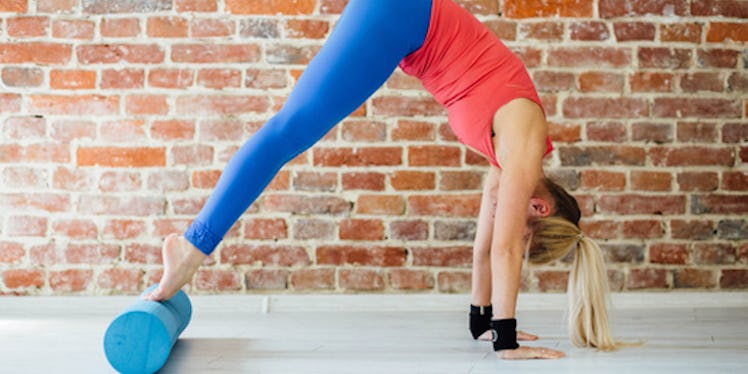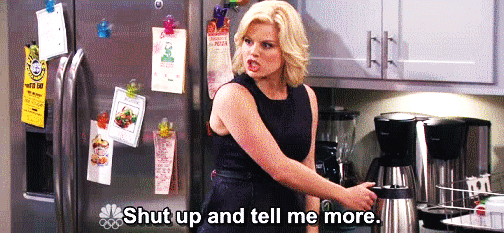
Here's What Foam Rolling Actually Is And Why You Should Try It
I never understood the true meaning of "hurts so good" until I started foam rolling.
And TBH, I still don't really understand, because it mostly just hurts.
I'm still kind of waiting on the "good" part.
I know, I know. I'm not making it seem like a walk in the park, so why would you want to try rolling out post-workout?
Well, if you've ever experienced that "can't-even-sit-at-my-desk" soreness after leg day, you're going to want to hear this, because this form of self-massage might just be the cure you're looking for.
Foam Rolling Is A Form Of Myofascial Release
You use a firm piece of foam (usually in the shape of a cylinder) to relieve muscle tension, which stops soreness right in its tracks.

It started exclusively with pro athletes, trainers, and therapists, and has since spread to more familiar faces, like that guy you hate at the gym who's always- hogging the squat rack.
To understand how it works, myofascial release is a safe and effective hands-on technique, in which you're literally giving yourself a deep-tissue massage by gently applying pressure to the connective tissue of your muscles (fascia) to eliminate soreness and tension.
By finding the spots with more tightness or trigger points in your body, you help your muscles recover, and allow them to return to "normal function" more quickly.
Normal Function Is When Your Muscles Are Elastic, Healthy, And Ready To Perform At A Moment's Notice
Through foam rolling, you actually possess full ability to control the healing and recovery process of your body. How cool is that?
Personally, I was most fascinated by the fact that you really have to tune into what your body is telling you so that you can apply pressure where you need it most
Only you can feel exactly what is happening, so the recovery process is in your hands (literally).
Everyone hates those days where they're so sore they can barely think of walking from the front door to the mailbox, let alone getting in a scheduled workout.
That's why five minutes of (admittedly uncomfortable) rolling out after my workout has become something I've learned to endure and incorporate into my routine.
If You Feel Like You Don't Know Where To Start, Take It Slow
It might feel awkward at first, but I swear it becomes much more natural with practice.
You can basically foam-roll any area with muscle tension, but there are certain points that are more common and naturally build up more tightness.
The calves, the iliotibial band, and the piriformis muscle are all common trigger points, according to Runner's World.
So, what are you waiting for? Go get the ball rolling (puns all day, every day).
Most gyms provide foam rollers, but if you feel like you're going to have a pretty committed relationship with myofascial release, you can purchase your own online or at an athletic store.
Happy rolling! And remember: no pain, no gain.